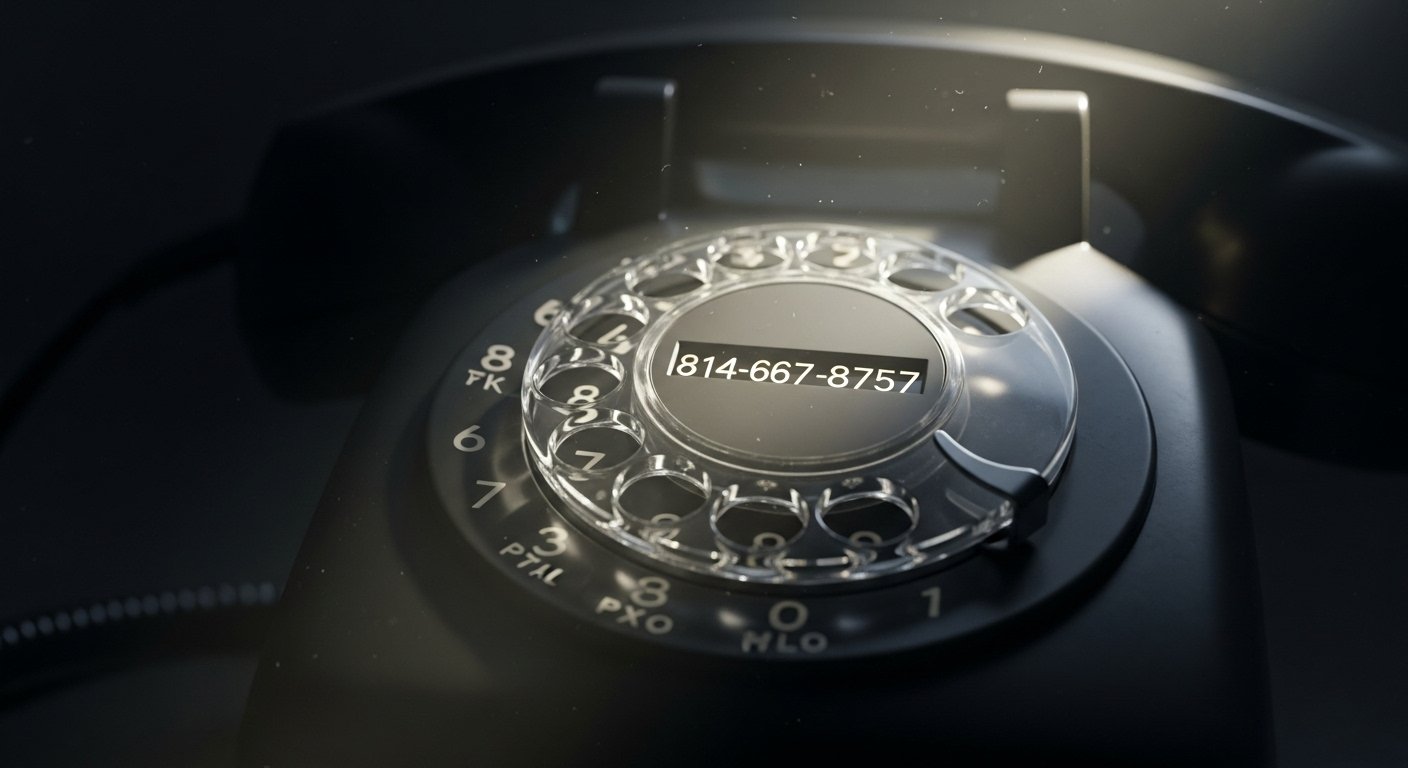We see them every day. On business cards, scribbled on napkins, flashing on our screens. Phone numbers are the utilitarian background noise of modern life. We barely give them a second thought.
But what if we did?
What if we picked one, at random, and really looked at it? Let’s take the number 8146678757. On the surface, it’s just ten digits. But if we lean in a little closer, we can hear the whispers of a thousand potential stories. This isn’t an article about a specific person or a scandal. It’s an exploration of the hidden universe contained within a single, arbitrary sequence of numbers.
It’s about the mystery of the ordinary.
The Anatomy of a Number: Cracking the Code
Before we get lost in the poetry, let’s break down the science. In North America, every phone number tells a small, geographical story.
-
Area Code (814): This is the number’s first clue. The 814 area code is a real one. It blankets a large swath of central and northwestern Pennsylvania, covering cities like Erie, State College (home to Penn State University), Altoona, and Johnstown. Instantly, our random number has a home. It’s not a coastal glamour number. It’s from the heart of Pennsylvania—a region of rolling hills, industrial history, and tight-knit communities.
-
Central Office Code (667): This is the next three digits, narrowing the location down further. While not as precise as a street address, this prefix can often point to a specific telephone switch or a general area within the 814 region.
-
Line Number (8757): These final four digits are the unique identifier, the specific address on the telephone network.
So, 8146678757 isn’t just random. It has a theoretical home. It has a potential landscape. It could belong to a farmer in Meadville, a student in State College, or a retired steelworker in Johnstown. The mystery is already getting more interesting.
The Power of a Number: A Blank Canvas for Stories
Humans are hardwired for narrative. We see a face in the moon and a monster in the shadows of a coat rack. So when we’re presented with an unknown number, our imagination rushes to fill the void.
Who does 8146678757 belong to? Let’s paint a few pictures.
Story 1: Eleanor’s Antique Shop
Imagine the number rings on an old, corded phone sitting on a polished oak counter. The air smells of lemon polish and old books. Eleanor, a woman in her seventies with kind eyes and a sharp wit, answers. “Eleanor’s Antiques, how can I help you?” Someone is calling to ask if she still has that vintage typewriter in the window. She does. The number is a lifeline to a world of preserved history and small-town commerce.
Story 2: Mark, The Freelance Designer
This time, the number is forwarded to a smartphone. It’s Mark, a graphic designer who moved back to his hometown in Pennsylvania to work remotely. 8146678757 is his business line. The call is from a new client in New York, thrilled with his logo concept. The number represents a modern paradox: a global career built from a local foundation.
Story 3: The Lost Connection
A man finds a crumpled receipt in an old jacket pocket. Scrawled on the back is “8146678757” and the name “Sarah.” He can’t remember who she is. A forgotten friend from a conference? A contact for a long-lost relative? The number becomes a symbol of a faded memory, a tiny, unresolved thread in the tapestry of a life.
The number itself is neutral. It’s we who give it meaning, emotion, and life.
The Dark Side: Why We Fear Unknown Callers
Of course, not all mystery is romantic. In our modern context, an unknown number flashing on our caller ID often triggers a spike of anxiety.
Is it a scam?
A robocall?
A debt collector?
Numbers like 8146678757 can become villains in our daily lives. We’ve all been trained by “neighbor-spoofing,” where scammers fake a local area code to trick us into picking up. This has eroded our trust in the simple phone call. The very tool designed for connection has become, for many, a source of irritation and fear.
This duality is fascinating. The same sequence of digits that could be a lifeline for Eleanor’s Antique Shop could, in another context, be a weapon of mass annoyance in the hands of a spammer. The number’s identity is entirely dependent on the intent of the caller.
Beyond the Call: Numbers as Digital Identity
Think bigger than a phone call. In our digital world, numbers are more than just for dialing.
8146678757 could be:
-
A default password on an old router in a dorm room at Penn State.
-
A customer account number for a utility company in Erie.
-
The serial number on a specific piece of manufacturing equipment in an Altoona factory.
-
A forgotten username for a forum from the early 2000s.
In the vast, impersonal databases that run our world, we are often reduced to numbers. This one, 8146678757, is a stand-in for that concept. It’s a tiny, digital soul waiting for its purpose to be defined.
The Psychology of the Random: Why This Fascinates Us
Why spend even a moment thinking about a random number? Because it represents infinite possibility. It’s a “what if” machine.
Staring at 8146678757 is like staring at a star in the night sky. You know it’s one of billions, but for a moment, you focus on its specific, tiny light. You wonder if someone, somewhere, is looking back. This taps into a deep-seated human desire to find patterns, meaning, and connection in the chaos of the universe.
It’s a form of modern-day cartomancy—but instead of reading cards, we’re reading digits, searching for a story in the randomness.
Conclusion
The journey of 8146678757 is a reminder to look closer. The world is filled with seemingly mundane objects—a phone number, a license plate, a serial number on a coffee maker—that are all teeming with unwritten stories and unspoken potential.
They are blank slates for our imagination, anchors for our memories, and the invisible architecture of our connected lives. The number itself is silent. It has no inherent meaning. But the moment a human being interacts with it—by dialing it, writing it down, or even just wondering about it—it bursts into life.
So next time you see a string of digits, pause for a second. You might just be looking at a whole, unexplored world.
Frequently Asked Questions (FAQs)
1. Is the phone number 8146678757 a real, active number?
This article uses 8146678757 as a creative example to explore the concepts of identity, mystery, and connectivity. It is not intended to represent any specific, active phone number or individual. Please do not call this number, as it is used here purely for illustrative purposes.
2. What should I do if I keep getting spam calls from a number with my area code?
This is a common tactic called “neighbor-spoofing.” The best defense is to not answer calls from numbers you don’t recognize. If you do answer and it’s a scammer, hang up immediately without providing any information. You can also use your phone’s built-in silencing features for unknown callers and report the number to the FCC.
3. Can a phone number really tell you where someone is located?
While an area code and prefix can give you a general geographic region, it’s no longer a precise indicator. With the prevalence of mobile phones, number portability (keeping your number when you move), and Voice-over-IP (VoIP) services, a number with a Pennsylvania area code could easily belong to someone living in California or even another country.

